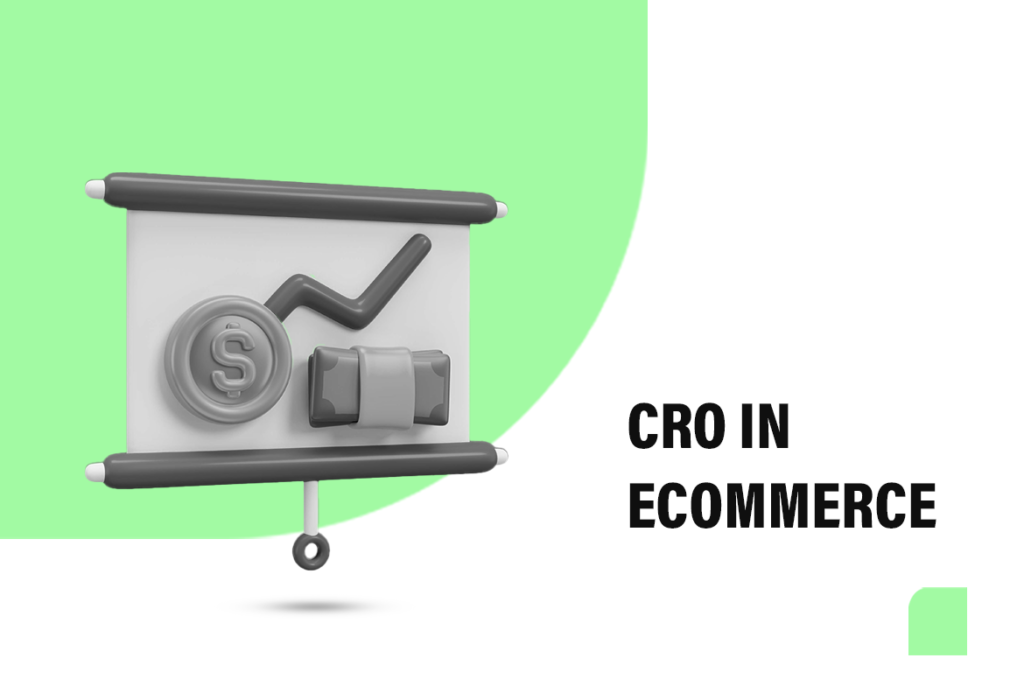How can a website improve your e-commerce development?
It’s feasible to operate an e-commerce venture exclusively on third-party platforms like Amazon or eBay, but this approach might hinder your business growth. Even if you’re selling through these platforms, having your website or portal is crucial to guide potential customers to your chosen destination.
A dedicated website signifies your commitment to your business. An effectively optimized website is one that appears in search results when individuals seek the products or services you provide. Creating an e-commerce website demands special attention, and here are a few ways a website can enhance your overall e-commerce progress.
how your website can become a stalwart ally in the competitive arena of online commerce
-
Reach a Broader Audience
Your website operates beyond the confines of a closed ecosystem. Consequently, even if your primary sales occur on another platform, individuals who don’t frequent that platform can discover your store via your website. A robustly crafted e-commerce site not only attracts visitors but also retains their interest.
Professional e-commerce website development encompasses functionalities designed to elevate your site’s visibility in search rankings, ensuring it reaches your desired audience. A polished design, user-friendly interface, excellent user experience, and optimized search capabilities significantly expand the reach of your e-commerce website to a broader audience.
-
Enhancing Sales
Expanding your reach doesn’t always guarantee increased sales, but effective website development significantly streamlines the customer journey.
Every element of your site holds the potential to drive customers away if the design or user interface is subpar. A responsive website improves the chances of converting leads into customers and fostering repeat business.
-
Scalability
As your business evolves, your website must adapt accordingly. Some sites experience slowdowns or crashes during sudden spikes in traffic, often due to design flaws. A robust e-commerce platform accommodates business growth and seamlessly navigates the evolving online landscape.
-
Flexibility
Unlike brick-and-mortar stores, an e-commerce site offers unparalleled flexibility. It allows you to manage your store on your terms—processing orders remotely or leveraging automated tools for smoother operations.
-
Cost Efficiency
Operating an e-commerce store mirrors running a physical shop but without the hefty expenses. Reduced overhead costs, absence of rent and utilities, and a leaner team result in substantial time and financial savings. With reduced costs, you can allocate resources to other pivotal areas like marketing or business expansion.
-
Analyzing Customer Insights
An online store presents abundant opportunities to gather and analyze customer insights. Your e-commerce website gathers data, analytics, and feedback, offering valuable insights into performance and avenues for improvement.
These insights stem not only from the website but also from customer reviews, surveys, social media, and diverse sources. The immediacy of the internet allows swift adjustments or issue resolutions. However, this only proves effective when your e-commerce site functions optimally.

Important functions for an e-commerce website
E-commerce websites must be equipped with a variety of features to ensure a smooth and enjoyable shopping experience for users. To achieve this goal, the following functions play a crucial role in enhancing the user interface and overall satisfaction. Implementing these functions in an e-commerce website can significantly improve user experience, leading to higher customer satisfaction, engagement, and ultimately, increased sales and loyalty.
-
User-Friendly Design
- Intuitive Navigation: Organize products in clear, easy-to-navigate categories.
- Responsive Design: Must work seamlessly across devices, from desktops to smartphones.
- Site Search with Filters: Enable users to find products quickly with advanced search filters.
- High-Quality Product Displays
- High-Resolution Images: Provide detailed, zoomable product images.
- Product Videos: Offer video demonstrations or 360° videos for a better look at products.
- Detailed Product Information
- Comprehensive Product Descriptions: Include all necessary product details.
- Customer Reviews and Ratings: Display user feedback for social proof and trust-building.
- Related Products: Suggest additional items users might like based on their browsing history.
- Simplified Checkout Process
- Guest Checkout Option: Offer the ability to checkout without creating an account.
- Save Cart / Wishlist: Users can save items to purchase later or share wishlists.
- Multiple Payment Options: Accept various payment methods for user convenience.
- Personalization
- Personalized Recommendations: Use browsing and buying behavior to recommend products.
- Targeted Offers: Present deals and discounts based on user interest and past purchases.
- Account Dashboards: Let users view their order history, tracking, and manage preferences.
- Customer Service
- Live Chat Support: Implement real-time chat for immediate assistance.
- FAQs and Help Resources: Provide self-help resources for common queries and concerns.
- Easy Return and Refund Policy: Clearly outline the return process to build customer trust.
- Security
- SSL Certification: Encrypt data to secure personal and payment information.
- Secure Payment Gateways: Use reputable payment processing services.
- Privacy Policy Transparency: Ensure users’ privacy and data are protected by law-compliant practices.
- Mobile Optimization
- Mobile App or Mobile-First Design: Prioritize functionality and aesthetics on mobile devices.
- One-Tap Purchase: Streamline purchasing on mobile for quick, easy transactions.
- Marketing Tools
- Email Subscription Options: Offer newsletter sign-ups for promotions and updates.
- Affiliate Programs: Integrate affiliate marketing to encourage influencers to promote products.
- SEO-Friendly Content: Use search engine optimization for product pages to attract organic traffic.
- Analytics and Feedback
- Conversion Tracking: Monitor user behavior to determine conversion rates.
- Performance Analytics: Use analytics to gauge website performance and customer engagement.
- User Feedback Mechanisms: Invite users to provide feedback to continually improve the platform.
Open-source E-commerce Website Development
Numerous open-source e-commerce platforms are available, offering extensive control over your website but demanding expertise in website development. This approach grants significant flexibility as you and your team handle design and customization.
However, navigating these platforms can be intricate and challenging, particularly if you lack programming or software development skills. While some platforms offer user-friendly interfaces, the costs associated with building, maintaining, and operating your platform could become prohibitive, depending on your business’s available resources.

Steps For Developing a Custom Ecommerce Website
Each eCommerce project may have specific requirements, but this guide provides a foundational template for developing a custom eCommerce website. The key to success is in thorough planning, flexible yet robust technology choices, detailed attention to user experience, and ongoing maintenance post-launch to ensure scalability and longevity of the platform. Developing a custom eCommerce website is a significant project that involves careful planning and execution. Here’s a step-by-step guide to help navigate this process.
- Research and Planning
Before any code is written, it’s essential to understand the market, your audience, and what features your eCommerce website will need. Create a detailed project plan, which includes:
- Identifying the target market and customer personas
- Analyzing competitors for insight into what works
- Deciding on the products or services you will be offering
- Outlining the required features and functionalities (shopping cart, payment gateway, user accounts)
- Planning the overall design aesthetics
- Establishing the project scope and timeline
- Choosing the Right Technology Stack
Selecting the right technology stack is crucial for website functionality and scalability. Consider the following for your eCommerce site:
- Programming languages (PHP, Java, Ruby, etc.)
- Database management system (MySQL, MongoDB, etc.)
- Front-end frameworks (React, Angular, Vue.js)
- eCommerce platforms (Magento, Shopify if opting for a less custom solution)
- Web hosting services
- Security protocols and certification requirements
- Designing the User Interface and Experience
The design stage is where you will create the look and feel of your eCommerce website. This stage should embody:
- Wireframing each page layout
- Designing eye-catching and responsive interfaces
- Focusing on user experience design for easy navigation and a seamless shopping experience
- Making design choices that are consistent with your brand
- Conducting usability testing with potential users and iterating based on feedback
- Website Development
During development, transform your designs and plans into a functioning website:
- Setting up the server, database, and other backend infrastructures
- Coding frontend interfaces based on the approved designs
- Developing and integrating necessary eCommerce features (product listings, shopping cart, order management, etc.)
- Implementing SEO-friendly URL structures and metadata
- Ensuring mobile optimization and cross-browser compatibility
- Testing
Before launch, thoroughly test the website to ensure functionality, usability, and security:
- Conducting performance testing to ensure it can handle traffic and transactions
- Performing security audits to protect customer data and transactions
- Carrying out functional testing to check all features work as expected
- Testing across multiple devices and browsers for a consistent user experience
- Launch and Maintenance
With testing complete, it’s time to launch your eCommerce website. Remember, launch day isn’t the end:
- Deploying the website on your live server
- Monitoring the website’s performance closely post-launch
- Soliciting feedback from users for improvements
- Regularly updating the site with new content, features, and security patches
- Implementing a backup policy and disaster recovery plan
What is the role of an ecommerce website developer?
E-commerce web developers play a pivotal role in ensuring seamless navigation, easy product discovery, and secure checkout processes for potential customers visiting your online store.
They possess a diverse skill set ranging from backend programming to frontend e-commerce web design, and their specific duties can vary based on your store’s type. A proficient developer or team can:
Craft an aesthetically pleasing and operationally functional e-commerce storefront.
Implement tools that facilitate customer search by size, color, price, or other relevant filters.
Offer guidance on selecting features that harmonize effectively with your overall website content.
Do I need a frontend developer and a backend developer?
It primarily hinges on the intricacy of your development process.
For an e-commerce setup utilizing an open-source framework, a backend developer’s role could be more pivotal than someone concentrating solely on design, though both roles are typically necessary. In the case of a SaaS (Software as a Service) platform, there might be a greater need for frontend work, yet having expertise in API development could also be valuable.
Although SaaS platforms often come with a comprehensive array of pre-built integrations and applications, dealing with added intricacies is best managed by an experienced professional.
How do I determine what features my ecommerce website needs?
Deciding on the essential elements and capabilities for your e-commerce site will differ depending on your business model and specific requirements.
Based on your objectives and performance metrics, craft a feature list tailored to your e-commerce website, aligning closely with your customer journey.
Here are key features to consider:
- Responsive design increase conversion by 20%.
- Robust SEO capabilities increase conversion by 30%.
- Optimized page speed increase conversion by 32%.
- Integration with social media platforms and online marketplaces increase conversion by 70%.
- Diverse payment options and gateways increase conversion by 80%.
- Integration with a content management system (CMS) increase conversion by 90%.
- Well-designed shopping cart functionality increase conversion by 66%.
Conclusion
Building a successful e-commerce website involves a comprehensive approach, combining both technical proficiency and customer-focused design. A well-developed site not only expands your reach and boosts sales but also scales as your business grows, offering flexibility and cost-efficiency. By integrating essential functions like user-friendly navigation, secure payment options, and responsive design, your platform will stand out in the competitive e-commerce landscape.
FAQ
What are the key benefits of having an e-commerce website?
An e-commerce website allows you to reach a global audience, operate 24/7, and streamline the buying process. It also provides opportunities for data collection, customer insights, and brand development.
How much does it cost to develop a custom e-commerce website?
The cost varies depending on the complexity, features, platform choice, and developer expertise. It can range from a few thousand dollars for basic sites to hundreds of thousands for fully customized solutions.
How can I improve SEO for my e-commerce website?
Focus on keyword optimization, fast page loading speeds, mobile responsiveness, high-quality content, and product descriptions. Additionally, user-friendly navigation and backlinks from authoritative sites will help.




